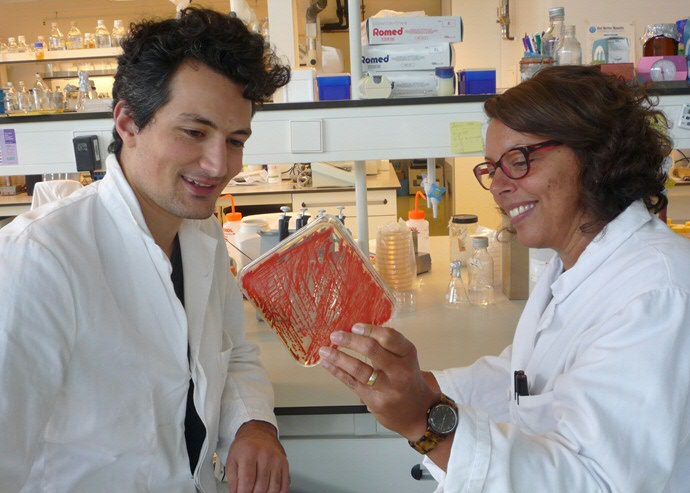The ecology of microbial invasions

University of Groningen scientists have described how microbial invasions follow the same general pattern as invasions by plant or animal species. This is a clear example of how the microbiological world follows general rules of ecology. The discovery demonstrates the value of using microbial systems to investigate ecological and evolutionary questions, and has strong implications for our understanding and even treatment of infectious diseases. The findings are published in a review article in the October 2015 issue of the journal Trends in Microbiology.
It may sound odd, but until a few years ago, microbes were not seen as ‘invasive species’. Yes, they can cause infection, but in ecological terms, an invasion is defined as when a species settles in an area where it did not previously exist. ‘And until recently, the idea was that all microbes are present everywhere, and that environmental conditions simply select which species dominate’, explains Cyrus Mallon, who recently received his PhD from the Microbial Ecology group at the Groningen Institute for Evolutionary Life Sciences (GELIFES).
Biogeographical patterning
This paradigm in microbiology stems from the time when bacterial species were mostly identified under the microscope with classic techniques that are limited in their determination. Even with the advent of DNA sequencing and genetic identification, this was generally done with one particular ribosomal gene. It wasn’t until scientists began to use the DNA sequencing of multiple genes to investigate microbiological communities that they realized that microbes do show biogeographical patterning, and could conclude that microbes could be viewed as invasive species.
New findings
This led to a flurry of studies over the last few years investigating the phenomenon of microbial invasions. Mallon, together with Professor Jan Dirk van Elsas and Associate Professor Joana Falcao Salles, analysed the literature so far to paint a picture of microbial invasions. Their review article reveals two main findings: The first is that microbial invasions follow a similar overall pattern to invasions by animals or plants. The second is that species diversity is the best defence against invaders.
Cow defecates
Mallon: ‘From the literature, we identified four phases of an invasion: introduction, establishment, spread and impact.’ These are similar to the phases of plant or animal invasions. Invasions occur when microbes enter a new environment. ‘For example, ocean currents can disperse microorganisms, but there is also evidence that microorganisms travel by air: microbes believed to have originated from the Gobi desert were collected in air samples from the northwestern United States.’ A more visible form of invasion is gut bacteria entering a field when a cow defecates.
Barrier
A further synthesis of a wide range of microbial invasion experiments showed that the diversity of the bacterial community that is already present in the environment forms a barrier to invading species. And while diversity is a good predictor of invasion resistance, at the heart of the mechanism is the ability of different species to exploit many different types of resource, thus removing any potential sustenance for an invader.
Model organism
The findings may have important implications, says Joana Falcao Salles: ‘As microbial ecology and general ecology seem to follow the same rules, it may be possible to use microorganisms as a model in ecological experiments.’ Due to their very short generation times, this could deliver much faster results.
Medical
Furthermore, a better theoretical understanding of microbial invasion could inspire medical research. Salles: ‘A pathogenic species of salmonella actually induces the gut to produce a customized substrate which gives the salmonella an edge on the competition. We might combat such an infection by selecting or engineering a harmless bacterium that would outcompete the salmonella by using the same substrate.’
Pre- and probiotics
Furthermore, the knowledge of how microorganisms gain a foothold in a new environment may inspire the development of pre- and probiotics that stimulate a healthy intestinal microbial community. ‘We know there are lots of different possible applications, but at this stage we can’t predict which will be most advantageous.’
More information
Reference: Microbial invasions: the process, patterns, and mechanisms . Cyrus Alexander Mallon, Jan Dirk van Elsas, Joana Falcão Salles. Trends in Microbiology, 1 October 2015.
More news
-
19 December 2025
Mariano Méndez receives Argentine RAÍCES award
-
18 December 2025
Why innovate, and for whom?
-
17 December 2025
Ben Feringa wins Feynman Prize
